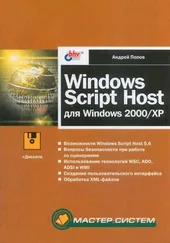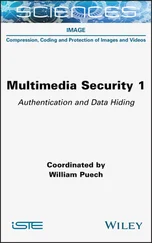
Windows Server 2012 R2 supports basic, dynamic, and virtual disk configurations. This section discusses techniques for working with each disk configuration type.
Using basic and dynamic disks
Basic, dynamic, and virtual disk configurations can be used with both legacy storage approaches and standards-based storage. Normally, Windows Server 2012 R2 disk partitions are initialized as basic disks. The exception is when you want to use software-based RAID instead of standards-based storage.
With software-based RAID, you can’t create new fault-tolerant drive sets by using the basic disk type. You need to convert to dynamic disks and then create volumes that use striping, mirroring, or striping with parity (referred to as RAID 0, 1, and 5, respectively). The fault-tolerant features and the ability to modify disks without having to restart the computer are the key capabilities that distinguish dynamic disks from basic disks. Other features available on a disk depend on the disk formatting.
You can use both basic and dynamic disks on the same computer; however, volume sets must use the same disk type and partitioning style. For example, if you want to mirror drives C and D, both drives must have the dynamic disk type and use the same partitioning style, which can be either MBR or GPT. Note that Disk Management allows you to start many disk configuration tasks regardless of whether the disks with which you are working use the dynamic disk type. The catch is that during the configuration process, Disk Management will convert the disks to the dynamic disk type. To learn how to convert a disk from basic to dynamic, see “Changing drive types” on the next page.
You can perform different disk configuration tasks with basic and dynamic disks. With basic disks, you can do the following:
■Format partitions, and mark them as active
■Create and delete primary and extended partitions
■Create and delete logical drives within extended partitions
■Convert from a basic disk to a dynamic disk With dynamic disks, you can do the following:
■Create and delete simple, striped, spanned, mirrored, and RAID-5 volumes
■Remove a mirror from a mirrored volume
■Extend simple or spanned volumes
■Split a volume into two volumes
■Repair mirrored or RAID-5 volumes
■Reactivate a missing or offline disk
■Revert to a basic disk from a dynamic disk (requires deleting volumes and restoring from backup)
With either disk type, you can do the following:
■View properties of disks, partitions, and volumes
■Make drive-letter assignments
■Configure security and drive sharing
■Use Storage Spaces to implement standards-based storage
Special considerations for basic and dynamic disks
Whether you’re working with basic or dynamic disks, you need to keep in mind five
special types of drive sections:
■ ActiveThe active partition or volume is the drive section for system caching and startup. Some devices with removable storage might be listed as having an active partition.
■ BootThe boot partition or volume contains the operating system and its support files. The system and boot partition or volume can be the same.
■ Crash dumpThe partition to which the computer attempts to write dump files in the event of a system crash. By default, dump files are written to the %SystemRoot% folder, but they can be located on any partition or volume.
■ Page fileA partition containing a paging file used by the operating system. Because a computer can page memory to multiple disks, according to the way virtual memory is configured, a computer can have multiple page file partitions or volumes.
■ SystemThe system partition or volume contains the hardware-specific files needed to load the operating system. The system partition or volume can’t be part of a striped or spanned volume.
REAL WORLD GPT is becoming the primary disk type for Windows Server. With Windows Server 2012 R2, a typical new disk has the GPT partition style with a recovery partition and an EFI system partition.
NOTE You can mark a partition as active by using Disk Management. In Disk Management, press and hold or right-click the primary partition you want to mark as active, and then tap or click Mark Partition As Active. You can’t mark dynamic disk volumes as active. When you convert a basic disk containing the active partition to a dynamic disk, this partition becomes a simple volume that’s active automatically.
You can use dynamic disks with any current version of Windows and many other operating systems, including most UNIX variants. However, keep in mind that you need to create a separate volume for any operating system not based on Windows.
You can’t use dynamic disks on portable computers. When you are working with non-portable computers and servers, you only can use dynamic disks with drives connected to internal controllers (as well as some eSATA controllers). Although you can’t use dynamic disks with portable or removable drives on these computers, you can connect such a drive to an internal controller or a recognized eSATA controller, and then use Disk Management to import the drive.
Windows Server 2012 R2 provides the tools you need to convert a basic disk to a dynamic disk and to change a dynamic disk back to a basic disk. When you convert to a dynamic disk, partitions are changed to volumes of the appropriate type automatically. You can’t change these volumes back to partitions. Instead, you must delete the volumes on the dynamic disk, and then change the disk back to a basic disk. Deleting the volumes destroys all the information on the disk.
Converting a basic disk to a dynamic disk
Before you convert a basic disk to a dynamic disk, you should make sure that you don’t need to boot the computer to an operating system that doesn’t support dynamic disks. With MBR disks, you should also make sure that the disk has 1 MB of free space at the end of the disk. Although Disk Management reserves this free space when creating partitions and volumes, disk management tools on other operating systems might not. Without the free space at the end of the disk, the conversion will fail.
With GPT disks, you must have contiguous, recognized data partitions. If the GPT disk contains partitions that Windows doesn’t recognize, such as those created by another operating system, you can’t convert to a dynamic disk.
With either type of disk, the following holds true:
■There must be at least 1 MB of free space at the end of the disk. Disk Management reserves this free space automatically, but other disk management tools might not.
■You can’t use dynamic disks on portable computers or with removable media. You can configure these drives only as basic drives with primary partitions.
■You shouldn’t convert a disk if it contains multiple installations of the Windows operating system. If you do, you might be able to start the computer only by using the installation which did the conversion.
To convert a basic disk to a dynamic disk, follow these steps:
Читать дальше







